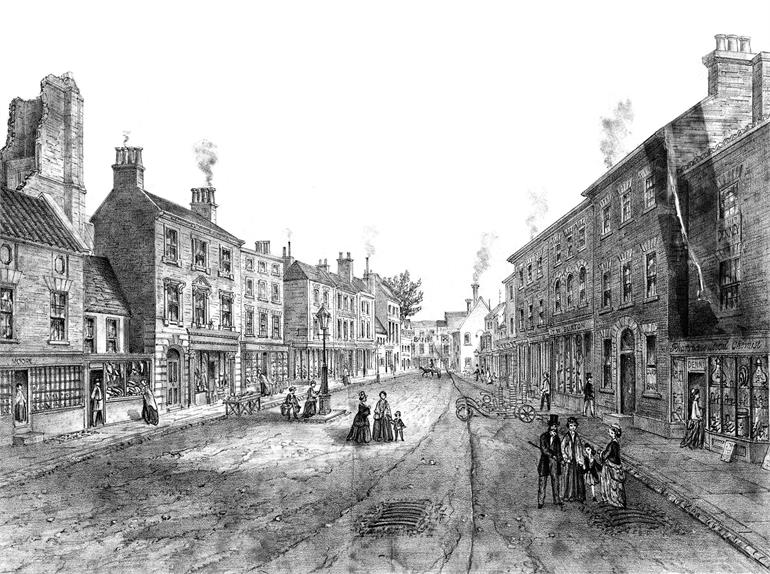North Walsham Guide
North Walsham's origins and place in history
North Walsham's origins and place in history
Records throughout the ages mention the town as Walsham Market and Walsham, the ‘North’ being added within the last few hundred years. The Domesday book tells us that a church existed in North Walsham and that it belonged to Saint Benet’s Abbey. The tower of this ancient church still exists today, being the oldest building in the town at well over a thousand years old. It was incorporated into the present church building and stands to the immediate north of the present tower ruin. Most of the town was built of wood at this time, being thatched with the reed that grew in the water meadows of the River Ant on the east side of the town. The town’s arable land was divided into three fields; Southfield, Millfield and Northfield, and were subdivided into strips allotted to the townsfolk. This was a system common throughout the country, with one field sown in wheat, another in beans, with barley for brewing, and the third left fallow for sheep to re-fertilize the land. Year by year this system was rotated so that all fields had equal usage. The outskirts of the town were well wooded and provided rough grazing for wild boar.
Weaving and ‘Walsham’
Flemish weavers came to England in the twelfth century and settled in Norfolk, the low lying landscape being reminiscent of their homelands. Their weaving capitals were sited at the twin-towns of Worstead and Walsham; weaving the country’s finest cloths of ‘Worsted’, still famed for its quality worldwide, and ‘Walsham’; which was a lighter cloth for summer use. By the beginning of the fourteenth century a market of these cloths was well established in Walsham. This new prosperity was proudly flaunted with the building of vast new churches for the two towns. More Flemish weavers moved to the district at the invitation of Edward III, and the town flourished at an incredible rate until 1348 ... the coming of the ‘Black Death’.
‘Black Death’ and Peasant Unrest
The Bubonic Plague or ‘Black Death’ ravaged England in 1348, and recurred in 1361 and 1369. With it came the death of thousands, resulting in a loss of labour needed to farm the land, and work on Walsham’s incomplete church; the original plans had to be altered, and simple intersected window tracery was substituted for the planned beautiful decorated tracery. With the economy of the country in turmoil an Act was passed in 1351 that no man should refuse to work for the same rate of pay as before the Black Death. Extra revenue was also generated by the imposition of a Poll Tax on the people. The arable fields were laid to pasture, and common land was enclosed for sheep farming. This was less labour intensive with more profit being made from wool production. This caused great unrest of the peasants, which led to the famous ‘Peasants’ Revolt’ of 1381 when John Litester, assisted by amongst others a man called Cubitt of North Walsham, led a rebellion of many thousands who seized the city of Norwich, killing the mayor in the process. Henry De Spenser, Bishop of Norwich, and a man with much experience of war abroad, was able to raise enough forces to drive the rebels from the city and they retreated to a camp at Bryant’s Heath near North Walsham. Despite the peasants’ elaborate makeshift barricades, they were ousted from their camp by the Bishop and his now numerous forces, and battle commenced. Many hundreds were slain and the defeated peasants fled towards the town desperately seeking their right of ‘sanctuary’ in the church, however, it was still incomplete and yet to be consecrated. The Bishop followed, Litester was captured, and the church witnessed a massacre of hundreds of peasants. De Spenser heard Litester’s confession, gave him absolution and then had him dragged to his public execution. Three stone crosses were soon erected marking the site of the battlefield, as a permanent reminder of the consequences of such uprisings.
